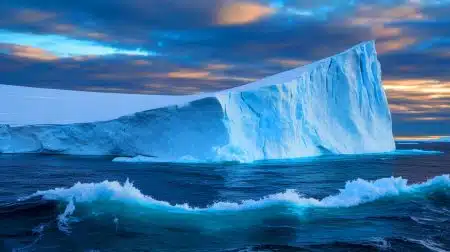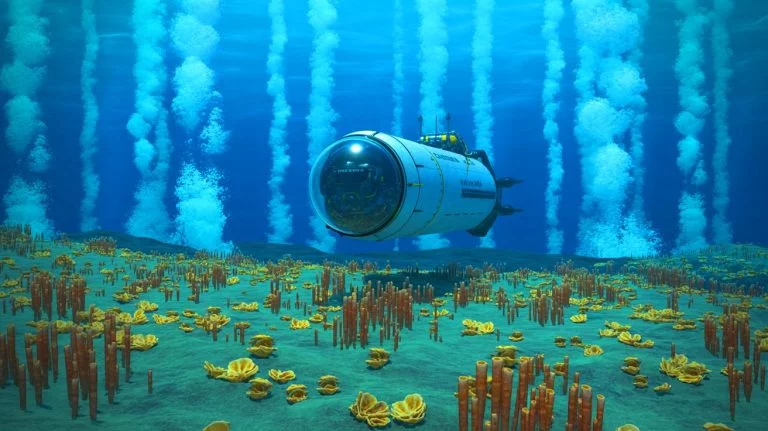| IN A NUTSHELL |
|
The depths of the ocean have always been a frontier of mystery and intrigue. Recent discoveries by a team from the Chinese Academy of Sciences have unveiled extraordinary deep-sea life forms in one of the planet’s most extreme environments. Utilizing the manned submersible Fendouzhe, the research team explored the Kuril-Kamchatka and western Aleutian Trenches, reaching depths exceeding 31,000 feet. The exploration revealed astonishing ecosystems thriving without sunlight, relying instead on chemosynthesis. The findings, published in the journal Nature, mark a significant milestone in deep-sea exploration and open new avenues for understanding life under extreme conditions.
Life Found Where Sunlight Never Reaches
Hadal trenches, located at depths between 19,700 and 36,100 feet, are formed where tectonic plates converge and one plate plunges beneath another. These deep-sea depressions are among the least explored regions on Earth. The recent expedition has confirmed the long-held suspicion that these remote environments host unique biological communities sustained by chemosynthesis rather than photosynthesis.
The research team documented flourishing ecosystems around methane seeps in the trenches. These ecosystems are sustained by fluids rich in methane and hydrogen sulfide, which rise through faults in the sediment layers. Isotopic analysis indicates that the methane is produced by microbes decomposing organic matter buried in the seabed. The discovery suggests that similar chemosynthesis-based communities may be more widespread than previously thought, potentially existing in other hadal trenches across the globe.
Scientists are particularly interested in these unique ecosystems as they may lead to the identification of new species and unveil complex relationships between marine animals and microorganisms adapted to survive in high-pressure environments. Their resilience and adaptive mechanisms offer insights into life’s potential in extreme conditions.
Jaya Anand Singh’s Research Path : A Journey from Curiosity to Contribution
Fields of Tube Worms and Mollusks Discovered
Lead researcher Dr. Xiaotong Peng described the expedition as a rare opportunity to explore uncharted deep-sea regions. The team encountered remarkable fields of tube worms and beds of bivalve mollusks, organisms that thrive in these extreme depths. Future research aims to understand how chemosynthetic organisms convert chemical compounds into energy, a process that supports life in the absence of sunlight.
Dr. Megran Du, from the Institute of Deep Sea Science and Engineering, emphasized the challenge of adapting to extreme pressure. She noted that uncovering the mechanisms that allow these organisms to survive under such intense conditions is a key question for future studies. The research is part of the Global Hadal Exploration Programme (GHEP), an international project dedicated to exploring Earth’s deepest oceans with advanced technology.
The insights gained from this exploration challenge long-held beliefs about the limits of life at extreme depths. Dr. Du reflects on her experience descending into the pitch-black depths, encouraging her students to be inspired by the breathtaking views from the submersible’s windows.
Implications for Future Research
The discovery of life forms at such extreme depths has broad implications for future scientific research. It challenges existing theories about the origins of life on Earth and the potential for life on other celestial bodies. The resilience of these organisms in harsh environments may provide clues about the possibility of life on planets and moons with similar extreme conditions.
Researchers aim to further explore these ecosystems to understand their biodiversity and ecological roles. The potential discovery of new species could lead to advancements in biotechnology and medicine, as organisms that thrive in extreme conditions may possess unique biochemical properties.
The ongoing study of hadal zones is crucial for understanding the full extent of Earth’s biodiversity. It also highlights the importance of preserving these unique ecosystems, as they offer invaluable insights into the adaptability and resilience of life.
Advancing Deep-Sea Exploration Technology
The success of the Fendouzhe expedition underscores the importance of technological advancements in deep-sea exploration. The submersible’s ability to withstand intense pressure and capture high-quality footage has provided researchers with unprecedented access to these remote environments.
Continued innovation in deep-diving technology is essential for advancing our understanding of the ocean’s depths. Improved submersibles and remote-operated vehicles (ROVs) will enable scientists to explore even greater depths and discover more about these enigmatic ecosystems.
The collaboration between international research teams and technological experts is vital for pushing the boundaries of deep-sea exploration. As technology continues to evolve, so too will our understanding of the mysteries that lie beneath the ocean’s surface.
The discoveries made by the Fendouzhe expedition have opened new avenues for scientific inquiry and exploration. As we continue to delve deeper into the mysteries of the ocean, what new secrets will we uncover about the resilience and adaptability of life in one of Earth’s most extreme environments?
Did you like it? 4.5/5 (30)







Wow, life at 31,000 feet? That’s deeper than my student loan debt! 🤣
How do these creatures survive without sunlight? What exactly is chemosynthesis?
Incredible discovery! Thank you for sharing such an enlightening article. 🌊
Does this mean we might find life on other planets with similar extreme conditions?
Are there any known threats to these ecosystems from human activity?
This is fascinating! But how do they know for sure these are new species?
Can someone explain how they got down there? I wouldn’t even go that deep in a pool! 😂
What kind of technology does the Fendouzhe use to withstand such pressure?
Could these discoveries lead to any medical breakthroughs? 🦑
Speling mistakes in the article, but still a great read!